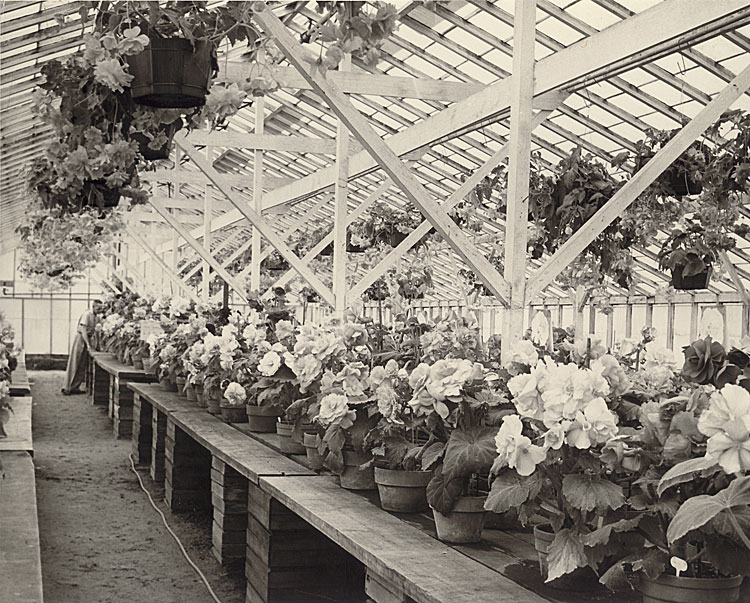By Carolyn Swift

When Capitola incorporated as a city in 1949, its boundaries embraced the fields of nearby nurseries to the west of the village, and when it came time to pick out a symbol for an annual celebration, the choice was easy. Begonias.
Vetterle and Reinelt hybridizing gardens, Antonelli’s Begonia Gardens and the enduring Brown Bulb Ranch all had award-winning lath and greenhouses within walking distance of the beach.
Vetterle brothers were growing an estimated two million tuberous begonia plants a year when it gained celebrity status in 1934. Vetterle operations ceased earlier when Shasta Nursery, Inc. bought the stock, seed, and growing material. Groundbreaking took place in March 1972 for an approved 342-unit apartment complex on the Vetterle site at 46th Avenue and Capitola Road.
Twenty years later, tour buses lined up every summer at Antonelli’s Begonia Gardens. Hollywood movie stars were regular customers. Helen Antonelli is remembered as a Begonia Festival founder and organizer. Tragically, the lath houses burned and the production had relocated to Moss Landing by 2010, when the Brown family’s Golden State Bulb Growers acquired Antonelli’s 73 years of begonia breeding stock.
As the first and last of regional begonia growers, Brown’s Bulb Ranch supplied millions of blossoms for the festival over its lifetime sixty-five years. San Francisco resident James A. Brown started with ten acres of strawberries along Forty-First Avenue in 1911. A decade later he was renowned as one of the region’s most knowledgeable and innovative growers, nurturing his begonia production with the Golden Guernsey Dairy.
Although the Brown Ranch and Dairy once spread over a broad expanse along what is today the busiest thoroughfare, Worth Brown, son of the founder, knew as early as 1958 that the industry was shifting toward Monterey County.
In a news interview, Brown said he was already growing 75 percent of his bulbs there. Capitola, he said, could best claim fame more for begonia seed germinating that the blossoms themselves. Nonetheless, Golden State Bulb Growers always made sure that Capitola got its pick from the fields at Marina every summer.
This year, the Brown family announced that it’s retiring at last from the business of growing begonias, although its bulb production of other flowers continues.
Today the bright whites, corals, pinks, and reds of begonia blossoms can only be found in the yards and patios of Capitola residents, and the ending of the festival itself looms as a poignant moment in history. Thankfully, the City’s spirit is resilient and its love of the festival—as well as appreciation for all the begonia growers—will be for all time.
•••
Carolyn Swift is a writer and Santa Cruz County historian. She is the former Curator for the Capitola Museum and wrote the book titled “By-the-Sea, A History of the Capitola Begonia Festival.”